- Home page
- Barcode - what is it? types of...
Barcodes
Today, barcodes are one of the most widely used means of identifying and marking data.
The technique has been used successfully around the world for several decades.
01Barcode
Definitively: - barcode is a graphical representation of specific characters through the use of a combination of dark and light elements, established according to the accepted rules of construction of a given code (symbology) It occurs most often in the form of a rectangular image. In barcodes, a distinction is made between characters that encode data and auxiliary characters that are characteristic of the symbology and can be read by a code scanner..
02Symbology
Symbolics of barcodes is a description of the principles of creating different types of codes, or more precisely, the way in which the characters of the writing, visually legible, are reproduced through light and dark elements of different widths.
03Barcode symbol
Barcode symbol is a set of elements, the structure of which is derived from a given symbolism and from visually legible characters, presented in graphic form.
04How barcodes work
Barcodes are essentially patterns of black and white bars, where each bar's width represents a specific character or number. A scanner shines a light on the barcode, detecting the reflected light patterns and converting them into an electrical signal. This signal is then decoded and linked to product information, allowing for quick and accurate identification.
New in HDF Labels' offer
At the beginning of 2025 we introduced the Business version for the most demanding customers. Check out the new features and schedule a free presentation!Check out the possibilities!1D BARCODES
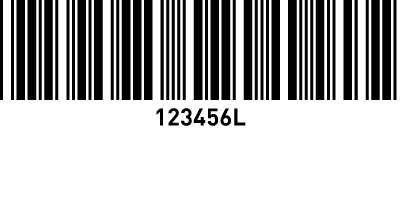
CODE 39 EXTENDED
With this barcode, 128 ASCII characters can be encoded. This code is almost identical to code 39 except that it uses $,/,% and + characters as codes preceding 26 letters. Such a procedure allows you to encode the remaining characters.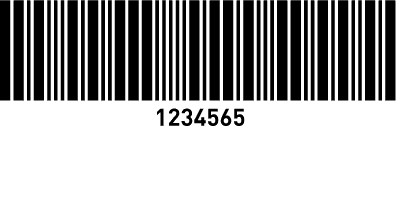
2 of 5 Industrial
The 2 of 5 barcode has a very convenient, easy-to-use format. This barcode consists of start and stop characters and characters to be encoded. Barcode 2 of 5 allows you to encode the digits 0-9. A checksum may or may not be generated.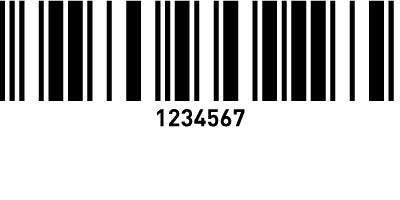
2 of 5 Interleaved)
The 2 of 5 interleaved barcode abbreviated as ITF (Interleaved Two of Five) is very popular. It was designed to increase the density of the 2 of 5 code.This format encodes all pairs of digits from 00 to 99.Each pair of digits is represented by 5 dark and 5 light dashes. The graphic images of the digits are interlaced, which is where the name of this condensed code comes from. This code only allows encoding an even number of characters, for this reason, when you want to encode an odd number of characters you must add a zero at the beginning. A checksum may or may not be generated.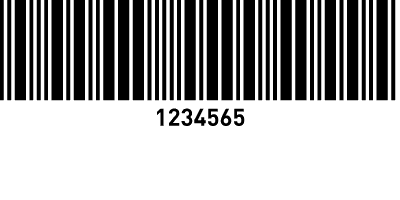
2 of 5 IATA
The 2 of 5 IATA barcode is a modification of the 2 of 5 Industrial code. The difference is that the start and stop characters in Code 2 of 5 IATA are represented differently than in Code 2 of 5 Industrial. The start character in this code is two narrow bars, while the stop character is one wide one narrow bar. It allows for the encoding of the digits 0-9.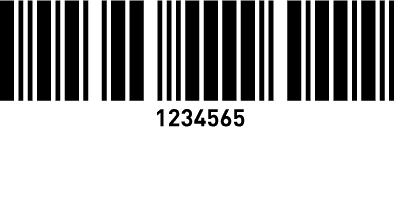
2 of 5 Matrix
The five elements that make up the 2 of 5 Matrix barcode are three dark and 2 light stripes. Two of them are wide and three are narrow. The Check digit in the barcode may or may not be added. The Check digit is calculated in the same way as in the 2 of 5 Interleaved code.
The five elements that make up the 2 of 5 Matrix barcode are three dark and 2 light stripes. Two of them are wide and three are narrow. The Check digit in the barcode may or may not be added. The Check digit is calculated in the same way as in the 2 of 5 Interleaved code.
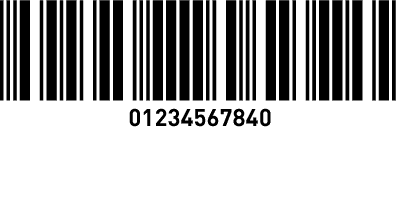
Datalogic 2 of 5
The Datalogic 2 of 5 barcode is very similar to the Matrix 2 of 5 barcode. The difference is in the different start and stop characters. With this code you can encode the digits 0-9.
The Datalogic 2 of 5 barcode is very similar to the Matrix 2 of 5 barcode. The difference is in the different start and stop characters. With this code you can encode the digits 0-9.
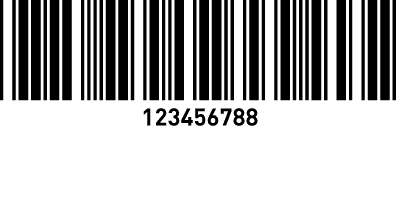
Code 32
Code 32 this code uses a complex form of converting a representation with a base of 10 into a representation with a base of 32 - this is where its name comes from. Code 32 allows you to encode a set of 32 characters and a *' character to mark the beginning and end. It is a variation of barcode 39 and uses the same character structure. It encodes the characters 0-9 and A-Z except for the characters A,E,I,O, and the start and stop characters (*). The maximum number of characters to be encoded is 9.
.
Code 32 this code uses a complex form of converting a representation with a base of 10 into a representation with a base of 32 - this is where its name comes from. Code 32 allows you to encode a set of 32 characters and a *' character to mark the beginning and end. It is a variation of barcode 39 and uses the same character structure. It encodes the characters 0-9 and A-Z except for the characters A,E,I,O, and the start and stop characters (*). The maximum number of characters to be encoded is 9.
.
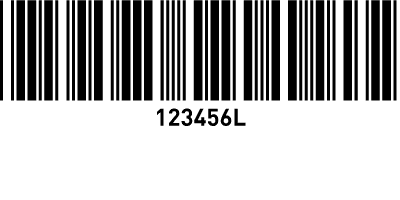
Code 39
Barcode 39 (or otherwise code 3 of 9) is one of the most popular. A barcode checksum may or may not be generated. The code is made up of light bars of two widths and dark bars also of two widths. Each character consists of nine elements: six narrow and three wide. Code 39 uses the '*' (ASCII ) character to mark the beginning and end of the code. This format allows you to encode numbers, capital letters and some other characters: 0-9 A-Z $ % * + - . / space
Barcode 39 (or otherwise code 3 of 9) is one of the most popular. A barcode checksum may or may not be generated. The code is made up of light bars of two widths and dark bars also of two widths. Each character consists of nine elements: six narrow and three wide. Code 39 uses the '*' (ASCII ) character to mark the beginning and end of the code. This format allows you to encode numbers, capital letters and some other characters: 0-9 A-Z $ % * + - . / space
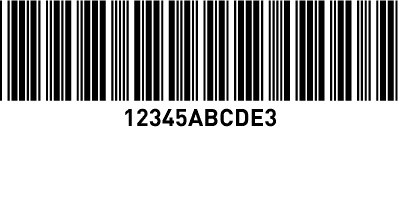
Code 39 Reduced
This code is very similar to barcode 39 with the difference that the set of encodable characters consists of the characters : 0-9 and A-Z. Hence, the calculation of the check character is based on modulo 36.
This code is very similar to barcode 39 with the difference that the set of encodable characters consists of the characters : 0-9 and A-Z. Hence, the calculation of the check character is based on modulo 36.
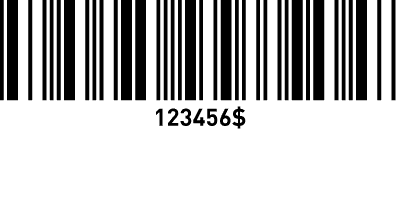
Codabar
The Codabar barcode also known as NW-7, USD-4, or code 2 of 7, is a discrete, general-purpose code that allows encoding the numbers 0-9 and six other frequently used characters. In addition, it encodes four additional characters representing start and stop characters. It is a very reliable code, easy to scan and very tolerant of printing inaccuracies. Because of its advantages, it has proven ideal for information processing and is often used in retail for price marking. It has also found its way into libraries, blood banks, photo labs, and distribution companies. Codabar does not require the use of a check digit, but some industries are incorporating it into their standards in order to reduce errors created when scanning the code. In Japan, the codabar code is called NW-7.
The Codabar barcode also known as NW-7, USD-4, or code 2 of 7, is a discrete, general-purpose code that allows encoding the numbers 0-9 and six other frequently used characters. In addition, it encodes four additional characters representing start and stop characters. It is a very reliable code, easy to scan and very tolerant of printing inaccuracies. Because of its advantages, it has proven ideal for information processing and is often used in retail for price marking. It has also found its way into libraries, blood banks, photo labs, and distribution companies. Codabar does not require the use of a check digit, but some industries are incorporating it into their standards in order to reduce errors created when scanning the code. In Japan, the codabar code is called NW-7.
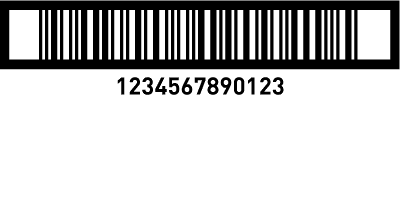
ITF-14
The ITF-14 barcode is a variation of the 2 of 5 Interleaved barcode encoding exactly 14 digits. The barcode symbol has cantilevered dashes that reduce the likelihood of misreading.
The ITF-14 barcode is a variation of the 2 of 5 Interleaved barcode encoding exactly 14 digits. The barcode symbol has cantilevered dashes that reduce the likelihood of misreading.
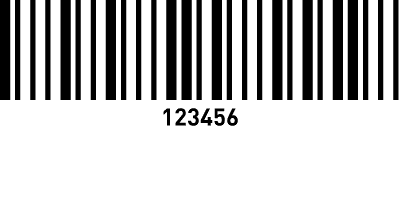
MSI Plessey
The MSI Plessey barcode is a code that encodes only numbers. It is used extensively for marking shelves in warehouses, tracking publications, coding identification cards, etc. It originally found application in inventory control. This code is MSI Data Corporation's modified version of the Plessey code.
Most typical applications of this code are reduced to using 12 digits, and most barcode readers are unable to read a code that contains more than 16 characters. This code comes in four versions: MSI Plessey without error correction, MSI Plessey +CHK10 (with single modulo 10 error correction), MSI Plessey +CHK10 +CHK10 (with double modulo 10 error correction) and MSI Plessey +CHK11 +CHK10 (with double modulo 11 and modulo 10 error correction).
The MSI Plessey barcode is a code that encodes only numbers. It is used extensively for marking shelves in warehouses, tracking publications, coding identification cards, etc. It originally found application in inventory control. This code is MSI Data Corporation's modified version of the Plessey code.
Most typical applications of this code are reduced to using 12 digits, and most barcode readers are unable to read a code that contains more than 16 characters. This code comes in four versions: MSI Plessey without error correction, MSI Plessey +CHK10 (with single modulo 10 error correction), MSI Plessey +CHK10 +CHK10 (with double modulo 10 error correction) and MSI Plessey +CHK11 +CHK10 (with double modulo 11 and modulo 10 error correction).
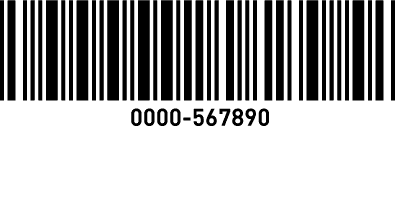
Code 11
The name barcode 11 derives from the fact that the set of characters that can be encoded consists of eleven characters, consisting of digits (0-9) and a dash character. Each character in this barcode 11 is represented by a dark bar and two light bars. It is a high-density code in which the characters are separated by gaps that carry no information. The control field consists of two characters, which can be optionally added to the code. Due to the high probability of errors in this code, it is recommended to include check digits in each code.
The name barcode 11 derives from the fact that the set of characters that can be encoded consists of eleven characters, consisting of digits (0-9) and a dash character. Each character in this barcode 11 is represented by a dark bar and two light bars. It is a high-density code in which the characters are separated by gaps that carry no information. The control field consists of two characters, which can be optionally added to the code. Due to the high probability of errors in this code, it is recommended to include check digits in each code.
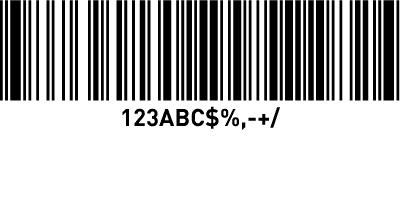
Code 93
Code 93 (Code 9 of 3) was designed to provide a code with higher density and greater security than the related code 39 described above. Despite its high density, this code requires as many as two checksums. This format allows, like Code 39, to encode numbers, uppercase letters and several other characters: 0-9 A-Z $ % * + - . / space
Code 93 (Code 9 of 3) was designed to provide a code with higher density and greater security than the related code 39 described above. Despite its high density, this code requires as many as two checksums. This format allows, like Code 39, to encode numbers, uppercase letters and several other characters: 0-9 A-Z $ % * + - . / space
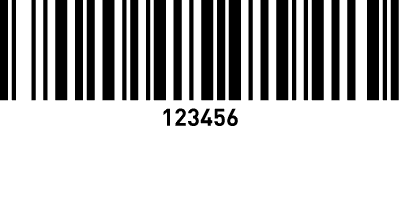
Code 128 (A, B, C)
Code 128 is a versatile barcode with high density and variable length. It can encode letters, numbers and other Ascii characters. By being able to use three different character sets (A, B and C) and switching codes between these sets, Code 128 allows encoding characters from the entire Ascii range. This makes it suitable for use in a variety of specialized applications.
Code 128 is a versatile barcode with high density and variable length. It can encode letters, numbers and other Ascii characters. By being able to use three different character sets (A, B and C) and switching codes between these sets, Code 128 allows encoding characters from the entire Ascii range. This makes it suitable for use in a variety of specialized applications.
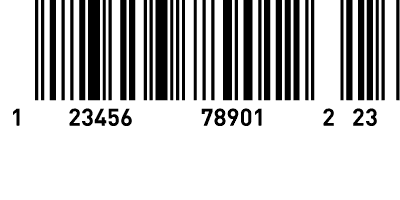
UPC-A, UPC-E
The UPC-A barcode and UPC-E barcode are widely used in the United States and Canada to mark retail items. UPC-A, also known as UCC-12 (U.P.C.), is the most popular code, placed on basically everything. UPC-E is a is a code based on UPC-A, which is used wherever there is insufficient space for a UPC-A code.
The UPC-A barcode and UPC-E barcode are widely used in the United States and Canada to mark retail items. UPC-A, also known as UCC-12 (U.P.C.), is the most popular code, placed on basically everything. UPC-E is a is a code based on UPC-A, which is used wherever there is insufficient space for a UPC-A code.
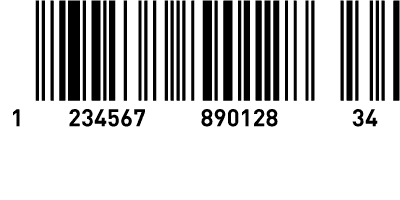
EAN/JAN
The EAN barcode is an abbreviation for European Article Number while JAN stands for Japanese Article Number. As the names themselves indicate, these codes are used in Europe and Japan to mark retail items. This code can also be successfully used in in-house applications such as marking containers, shelves in warehouses, tracking inventory in the manufacturing process, etc. This code is only capable of encoding the digits from 0-9. In case there is not enough space on the item to be marked to put a full-length EAN/JAN-13 code, a shortened version, namely EAN/JAN-8, is used. Both EAN/JAN-13 and EAN/JAN-8 codes can optionally have two- or five-digit extensions attached. The check digit is part of the barcode.
The EAN barcode is an abbreviation for European Article Number while JAN stands for Japanese Article Number. As the names themselves indicate, these codes are used in Europe and Japan to mark retail items. This code can also be successfully used in in-house applications such as marking containers, shelves in warehouses, tracking inventory in the manufacturing process, etc. This code is only capable of encoding the digits from 0-9. In case there is not enough space on the item to be marked to put a full-length EAN/JAN-13 code, a shortened version, namely EAN/JAN-8, is used. Both EAN/JAN-13 and EAN/JAN-8 codes can optionally have two- or five-digit extensions attached. The check digit is part of the barcode.
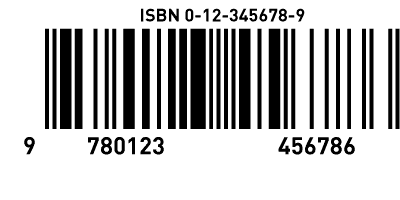
ISBN
The ISBN barcode is an EAN-13 code that encodes the first nine digits of the ISBN (the checksum digit is not encoded). These nine digits are preceded by a special country code (978). The total 10-digit ISBN is usually printed as HRT along with the code symbol as an addition to the text. which can show the thirteen digits currently encoded by the EAN-13 symbol.
The data for the ISBN code should consist of a 10-digit ISBN followed by an optional five-digit additional code. If an additional 5 digits are given to the coding string, an EAN-13+5 code is generated, with the additional data placed in the +5 part.The last digit of the ISBN, the checksum digit, can be an 'X' (ASCII 88). Also, to increase readability, the characters '-' (ASCII 45) may appear between the data. These characters are ignored.
Since the last digit of the ISBN, the checksum digit, is not encoded, it is required only for the purpose of including this digit in the printed text along with the code.
Invalid length of the encoded string (anything other than 10 or 15 digits), or an invalid character (i.e., anyone other than a digit and a '-' character, except the 'X' in the tenth position) in the string results in an error.
The ISBN barcode is an EAN-13 code that encodes the first nine digits of the ISBN (the checksum digit is not encoded). These nine digits are preceded by a special country code (978). The total 10-digit ISBN is usually printed as HRT along with the code symbol as an addition to the text. which can show the thirteen digits currently encoded by the EAN-13 symbol.
The data for the ISBN code should consist of a 10-digit ISBN followed by an optional five-digit additional code. If an additional 5 digits are given to the coding string, an EAN-13+5 code is generated, with the additional data placed in the +5 part.The last digit of the ISBN, the checksum digit, can be an 'X' (ASCII 88). Also, to increase readability, the characters '-' (ASCII 45) may appear between the data. These characters are ignored.
Since the last digit of the ISBN, the checksum digit, is not encoded, it is required only for the purpose of including this digit in the printed text along with the code.
Invalid length of the encoded string (anything other than 10 or 15 digits), or an invalid character (i.e., anyone other than a digit and a '-' character, except the 'X' in the tenth position) in the string results in an error.

ISSN
The ISSN barcode is an EAN-13 code that encodes the first seven digits of the ISSN (the checksum digit is not encoded).
These nine digits are preceded by a special country code (977), followed by a two-digit price code. The total 8-digit ISSN is usually printed as HRT along with the code symbol as an appendix of text that can show the thirteen digits currently encoded by the EAN-13 symbol.
The data for the ISSN barcode should consist of an 8-digit ISSN, a two-digit price code followed by an optional two- or five-digit additional code.
If an additional 2 or 5 digits are given to the coding string, an EAN-13+2 or EAN-13+5 code is generated, respectively, with the additional data placed in the +2 or +5 part. The last digit of the ISSN, the checksum digit, can be an 'X' (ASCII 88). Also, to increase readability, the characters '-' (ASCII 45) may appear between the data. These characters are ignored.
Since the last digit of the ISSN, the checksum digit, is not encoded, it is required only for the purpose of including this digit in the printed text along with the code.
Invalid length of the encoded string (anything other than 10, 12 or 15 digits), or an invalid character (i.e., anyone other than a digit and a '-' character, except the 'X' in the eighth position) in the string results in an error.
The ISSN barcode is an EAN-13 code that encodes the first seven digits of the ISSN (the checksum digit is not encoded).
These nine digits are preceded by a special country code (977), followed by a two-digit price code. The total 8-digit ISSN is usually printed as HRT along with the code symbol as an appendix of text that can show the thirteen digits currently encoded by the EAN-13 symbol.
The data for the ISSN barcode should consist of an 8-digit ISSN, a two-digit price code followed by an optional two- or five-digit additional code.
If an additional 2 or 5 digits are given to the coding string, an EAN-13+2 or EAN-13+5 code is generated, respectively, with the additional data placed in the +2 or +5 part. The last digit of the ISSN, the checksum digit, can be an 'X' (ASCII 88). Also, to increase readability, the characters '-' (ASCII 45) may appear between the data. These characters are ignored.
Since the last digit of the ISSN, the checksum digit, is not encoded, it is required only for the purpose of including this digit in the printed text along with the code.
Invalid length of the encoded string (anything other than 10, 12 or 15 digits), or an invalid character (i.e., anyone other than a digit and a '-' character, except the 'X' in the eighth position) in the string results in an error.
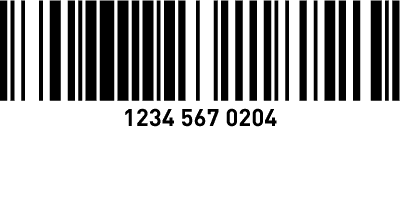
UPS
The UPS barcode is a code based on code 39 and is used to add tracking numbers and postal codes on customer-generated UPS (United Parcel Service) package labels.
The company HDF Software Ltd. provides four variants of this type of barcode: UPS Standard (18 digits) and UPS 18 digits - encode 18 characters in the corresponding format, UPS Standard (11 digits) and UPS 11 digits - encode 11 characters in the corresponding format.
The UPS barcode is a code based on code 39 and is used to add tracking numbers and postal codes on customer-generated UPS (United Parcel Service) package labels.
The company HDF Software Ltd. provides four variants of this type of barcode: UPS Standard (18 digits) and UPS 18 digits - encode 18 characters in the corresponding format, UPS Standard (11 digits) and UPS 11 digits - encode 11 characters in the corresponding format.
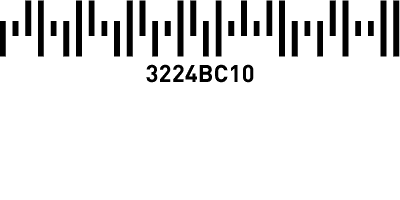
Dutch Post Data
The data consists of a 6-character postal code (4 digits followed by 2 letters), then there are 1 to 5 digits representing the house number/postal box/postage at the addressee's expense, followed by an optional 'X' (or 'x') character acting as a separator, then there is optional information (1 to 6 characters) denoting the extension of the house number (letters or digits).
For foreign addresses, the data may consist (instead of the above rules) of a 2-letter ISO country code, followed by the foreign postal code (from 1 to 16 characters).
Incorrect characters or character string length in the postal code, house number/postal box/postage at the addressee's expense, house number extension, country code, or foreign barcode will be treated as an error, and all characters will be changed to zeros.
The data consists of a 6-character postal code (4 digits followed by 2 letters), then there are 1 to 5 digits representing the house number/postal box/postage at the addressee's expense, followed by an optional 'X' (or 'x') character acting as a separator, then there is optional information (1 to 6 characters) denoting the extension of the house number (letters or digits).
For foreign addresses, the data may consist (instead of the above rules) of a 2-letter ISO country code, followed by the foreign postal code (from 1 to 16 characters).
Incorrect characters or character string length in the postal code, house number/postal box/postage at the addressee's expense, house number extension, country code, or foreign barcode will be treated as an error, and all characters will be changed to zeros.
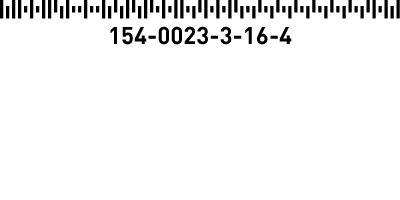
Japan Post Data
The data of the Japan Post Data barcode consists of a 7-digit postal code number followed optionally by house or block number information.
A hyphen may occur between the third and fourth digits in the postal code, as well as between the postal code and the block or house number information. If such a hyphen is included then it is ignored in encoding.
Any hyphen included in the block or house number information section is treated like any other character to be encoded.
Invalid characters or string length in the postal code will be marked as an error and replaced with a CC4 check character.
The data of the Japan Post Data barcode consists of a 7-digit postal code number followed optionally by house or block number information.
A hyphen may occur between the third and fourth digits in the postal code, as well as between the postal code and the block or house number information. If such a hyphen is included then it is ignored in encoding.
Any hyphen included in the block or house number information section is treated like any other character to be encoded.
Invalid characters or string length in the postal code will be marked as an error and replaced with a CC4 check character.
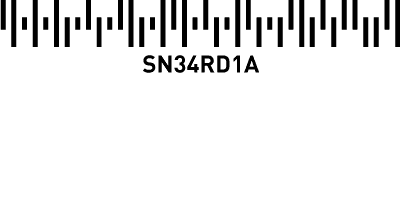
Royal Mail 4-State Customer Code
Royal Mail 4-State Customer Code used by post offices in the United Kingdom. This code ensures faster and more reliable mail delivery. Its use contributes to significant savings in postage. Mail to the UK from abroad must include the name of the country.
Royal Mail 4-State Customer Code used by post offices in the United Kingdom. This code ensures faster and more reliable mail delivery. Its use contributes to significant savings in postage. Mail to the UK from abroad must include the name of the country.
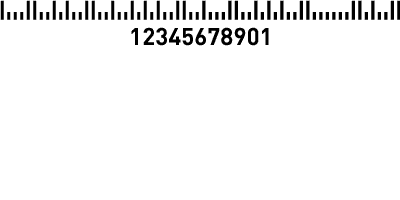
POSTNET
The PostNET barcode helps ensure faster and more reliable mail delivery. The use of this barcode contributes to significant savings in postage. HDF Software Sp. z o.o. offers three types of POSTNET barcodes that differ in the number of characters to be encoded: POSTNET 5 ZIP+4, POSTNET 9 ZIP+4 and POSTNET 11 DPC.
The PostNET barcode helps ensure faster and more reliable mail delivery. The use of this barcode contributes to significant savings in postage. HDF Software Sp. z o.o. offers three types of POSTNET barcodes that differ in the number of characters to be encoded: POSTNET 5 ZIP+4, POSTNET 9 ZIP+4 and POSTNET 11 DPC.
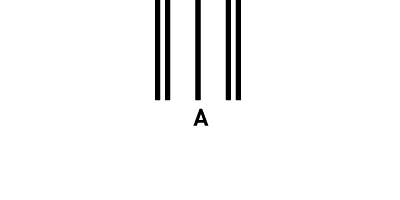
USPS FIM
FIM (Facing Identification Marks) is used to mark responses on postcards. It is used in the United States.
FIM (Facing Identification Marks) is used to mark responses on postcards. It is used in the United States.
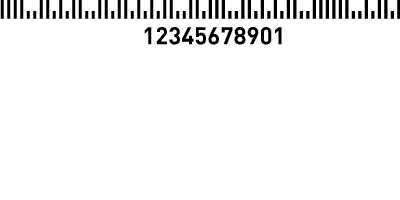
US Post Office PLANET
This barcode was developed by the United States Postal Service in order to uniquely identify, without having to open the envelope, each piece of mail. There can now be two types of barcodes on mail: the regular POSTNET barcode and the new PLANET.
The PLANET barcode has a long list of useful features relating to tracking changes in address information for customers who have moved. Large companies can verify tens of thousands of letter returns due to a change of address each month.
Today you have to open an envelope to find out who the customer is. With PLANET's identification barcode on every mail piece, identification involves scanning the barcode without having to open the envelope. This speeds up the customer identification process considerably and reduces costs.
This barcode was developed by the United States Postal Service in order to uniquely identify, without having to open the envelope, each piece of mail. There can now be two types of barcodes on mail: the regular POSTNET barcode and the new PLANET.
The PLANET barcode has a long list of useful features relating to tracking changes in address information for customers who have moved. Large companies can verify tens of thousands of letter returns due to a change of address each month.
Today you have to open an envelope to find out who the customer is. With PLANET's identification barcode on every mail piece, identification involves scanning the barcode without having to open the envelope. This speeds up the customer identification process considerably and reduces costs.
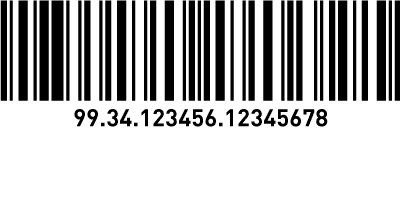
Swiss Postal
The height of the Swiss Postal barcode must be:
equal to or greater than 20mm for module widths equal to or less than 0.45mm
equal to or greater than 23mm for module widths equal to or greater than 0. 45mm
The data to be encoded is the 18-digit identification code, which consists of:
the two-digit postal code,
the two-digit administrative district code,
the six-digit customer account number,
the eight-digit item (item) number.
To increase readability, the dot characters '.' (ASCII 46) can appear anywhere in the data to be encoded - these characters are ignored when encoding. Three dot characters are automatically inserted in the appropriate positions in the HRT printed with the barcode, separating the four components of the identification code. Incorrect characters or the length of the character string in the identification code will be treated as an error, and all characters will be changed to zeros.
The height of the Swiss Postal barcode must be:
equal to or greater than 20mm for module widths equal to or less than 0.45mm
equal to or greater than 23mm for module widths equal to or greater than 0. 45mm
The data to be encoded is the 18-digit identification code, which consists of:
the two-digit postal code,
the two-digit administrative district code,
the six-digit customer account number,
the eight-digit item (item) number.
To increase readability, the dot characters '.' (ASCII 46) can appear anywhere in the data to be encoded - these characters are ignored when encoding. Three dot characters are automatically inserted in the appropriate positions in the HRT printed with the barcode, separating the four components of the identification code. Incorrect characters or the length of the character string in the identification code will be treated as an error, and all characters will be changed to zeros.
BARCODES 2D
What are barcodes and what information do they contain?
Barcodes were created as a graphical record of characters, in the form of dark and light bars / dashes with different rules for the symbolism of a particular type of code. We know of at least a dozen of the most commonly used varieties, which differ from each other in the layout and length of the bars and the ability to code, depending on the number of digits, letters or the number of characters. The main purpose of using barcodes, became the need to optimize processes, including increasing the reliability of the information read, by eliminating the need for handwritten characters in computer programs.Barcodes gave the opportunity to automatically read information directly through the scanning device. The first barcodes were created as early as the 1940s as a result of work on automating the reading of product information, which could be based on a sequence of special characters and symbols. The first code, commonly referred to as a 'gun shield', was created as early as 1949 and set the course toward automation and the possibility of mass storage of product data.
The following years brought the development of large stores and supermarkets, which were geared toward mass service of large numbers of customers. The multiplicity of goods and products offered in supermarkets meant that in the 1950s and 1960s, there was far-reaching research into the creation of commodity identification systems, through the use of special codes, signs and symbols that could contain a whole range of information about a single product.
Barcodes and information flow
The final form of product identification codes, became bar codes, also called bar codes, from English: bar code. They have proven to be the most effective form of identification code. Today, there are more than 400 types of different forms of bar codes around the world. They allow access to a database of products, according to their identifiers.The bar codes themselves do not have significant information about the product, but by having the right combination of digits, through access to the appropriate databases, we can obtain detailed data about the product. One of the most used solutions in the wholesale and retail sale of goods and products, existing for more than 20 years in Poland, is the EAN code and the EAN/UPC system. In our country, it is the EAN code that is placed on the packaging of goods to facilitate retail and wholesale trade. Thanks to the use of the bar code, the use of unnecessary documentation has been eliminated.
Bar codes have significantly accelerated record-keeping, customer service and production work in many manufacturing companies. Barcodes and appropriate data reading systems, gave the opportunity to optimize many processes. The most important element in the use of barcodes, has become inventory management. With appropriate warehouse systems, identification codes, make it possible to introduce automatic signaling of stock shortages and suggesting specific behavior, and soon it will also be possible for intelligent systems with artificial intelligence to automatically order shortages.
Structure and application of EAN codes
The basis for the existence of each product in the database, is the inclusion on its packaging of the European Article Number (EAN), or European Article Number, which since 2005, has been standardized for all countries and used worldwide in a single form. The EAN identification code, makes it possible to mark a given product with an eight- or thirteen-digit identification number, by which it can be found in the database. The code in itself does not contain specific information.All data relating to a given product, such as name, features and others, are retrieved from the corresponding database when the code is read with a scanning device. However, in order to load all the information on the selected product, the data on it must first be entered into the computer. The symbology of the EAN barcode, is a simple number system, consisting of two and sometimes three digits, which identify the authorities that assign the code to the manufacturer of the product in question. In reality, the numbers simply identify a particular country or economic region. Today there are two types of EAN code.
In use is a thirteen-digit version, or EAN-13, and an abbreviated version - eight digits - EAN-8, which was introduced to make it easier to put the code on packaging for small products. Each EAN code consists of individual digits that specify specific data. The EAN-13 code, contains thirteen digits, the first 3 of which denote the number of the country in which the EAN code was issued (the so-called GS1 prefix). Poland received the code 590 (This does not mean that the product was manufactured in this country or that the manufacturer is based in this country).
The next numbers specify the distributor or manufacturer, the next ones indicate the product number, while the last one is the so-called control number, which is used to detect an error in reading the barcode. It is calculated according to a special algorithm for a particular type of barcode. EAN-8 is calculated similarly, only with fewer digits denoting the manufacturer and the product number. The check number at the end for both codes, is always invariable.
Barcode quality
The basic elements of each bar code, which is responsible for its identification, are the arrangement of vertical dashes and the encoded number. Since EAN codes can vary in size, the printing of new codes, depends on several factors. The smaller the code printed on the product label, the smaller the deviations in quality, in the form of the width of the dashes and the gaps between them, are allowed for the code to be read correctly by scanning devices.The smaller the EAN code, the more accurate the printing process must be, because it is more difficult to maintain the correct quality of the code. Barcodes are built in such a way that the white background reflects and the vertical black dashes maximally absorb the red light of the code reader. The optimal version of the barcode, is black dashes and a white background, but manufacturers do not always use this color combination, due to the different colors of packaging and the possibility of printing the entire content of the graphic elements.
BARCODES 2D
Dimensional barcode allows to record many times more information without increasing the area of the code. D 2D barcode can contain serial number, manufacturer's data, exact sizes, date of manufacture, can encode operating instructions, warnings, description of the processing, product history, its purpose, the entire bill of lading or invoice. In addition, the code can include a digital recording of graphics (such as a photo) or sound.In D 2D barcodes, data recording occurs on two axes, making them more capacious than their linear codes (the ability to encode more alphanumeric characters).
An additional advantage of D 2D barcodes is their greater resistance to damage. A partially damaged D 2D barcode can still be read correctly, thanks to the error correction mechanisms implemented.
Dimensional barcodes allow encoding the same amount of data on up to ten times less area than when using traditional barcodes.
EVOLUTION OF THE 2D BARCODE
Basic use of 2D codes:Product marking
Labeling of small mechanical and electronic components - e.g. integrated circuits
Data encoding on documents - e.g. VAT invoice number, registration certificate, etc.
Marking of goods in stock - information about supplier, recipient, expiration date.
Why invest in 2D code technology?
Larger amount of information placed on a smaller surfacepossibility to encode alphanumeric data
information contained in 2D codes is better protected in comparison with barcodes
proper reading of all information contained in the 2D code - even in the case of damage to the 2D code up to 50%
2D codes can be used as a handy database, thanks to the possibility of encoding in them up to 7000 ASCII characters
2D codes can be used wherever data about the contractor should be confidential, such as: on invoices or shipping documents. 2D codes, thanks to their small size, can be used for marking small elements
The matrix structure of some 2D codes (e.g.: MaxiCode) allows their use on curved surfaces
D 2D codes take up much less space on packaging than linear codes, therefore they are perfect for marking luxury goods, where aesthetics of the packaging is an important element.